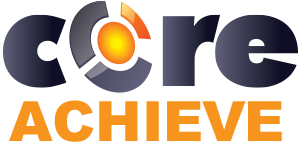How Organizations Can Increase User Adoption of Their LMS
May, 09 2023
Other posts:
Enhancing Team Dynamics for Effective Group Decision-Making with LMS Integration
Organizations increasingly rely on collaborative efforts to solve complex problems, innovate, and adapt to change, but how do we ensure that collaboration is happening.
Maximizing Small Business Potential with Training Technology
Training technologies can push small businesses ahead of their competitors, but what are the factors that go into choosing the right technology?
Unlocking Employee Potential: The Transformative Benefits of an Interactive Learning Management System (LMS)
Interactive training allows for unlocking employee potential, but how is it done?
Building a Robust Sales Pipeline with Training
Every organization wants a streamlined sales pipeline, but building one requires a series of interlocking activities with one of the most important being training.
Strategies for Adapting In-Person Training to Online Platforms
Online training is one of the most flexible ways of delivering training across organizations, but how do you even begin to adapt in-person training into online?
A simple change in framing could affect how willing users are to adopt LMS...
User adoption is the crucial factor for the success of a Learning Management System (LMS). It does not matter what an LMS has if the target audience isn’t engaging.
Implementing an organization-wide LMS can be difficult specifically because of low user-adoption rates and it can be easy to assume the LMS is lacking. However, low user adoption rarely has to do with the quality of the LMS, rather, it is typically symptomatic of deeper organizational issues. What are these organizational issues and how can organizations overcome these barriers?
What are the Barriers to LMS Adoption
Many organizational barriers can block user adoption like resistance to change, lack of awareness, or no training. Other barriers are caused directly by LMS, namely poor user experience. These barriers are not impossible, especially if one understands why they happen.
Lack of Awareness
Lack of awareness is an obvious issue; employees may not be aware of the LMS's existence or its purpose. This effect is compounded by the size of the organization as multiple departments may have different ideas of how the LMS should (or shouldn’t) be used.
Resistance to Change
Organizations can grow into traditional and develop routines, which, naturally, will cause people to be resistant to change. An LMS can be caught in the crosshairs of this stubbornness, with users unaware or not caring about the benefits, holding fast in their routines.
Lack of Training and Support
While resistance to change can be a barrier, another one is a lack of training and support for users who do want to adopt the LMS. Without proper training or support the organization not only makes it more difficult for users to adopt an LMS but also shows users a seeming lack of care from the organization itself.
Lack of Motivation
Lacking motivation can affect any project an organization takes on and an LMS is no different. For many users, they may not see any reason to begin using the LMS, especially if they have been with the organization for a while.
Poor User Experience
An LMS with poor user experience can be a massive barrier to user adoption, as poor user experience can cause frustration and destroy any motivation a user has.
Overcoming Barriers of LMS Adoption
There are ways to overcome the above barriers of LMS adoption, some, like including necessary or useful information on the platform, can affect multiple barriers, while others like providing training and support, affect specific pain points. While these tips are not guarantees for adoption, implementing them will make adoption far easier.
Communicate the Value
An LMS is an asset for an organization as it allows training to be conducted more efficiently and effectively, but an LMS is also valuable for the individual user, depending on how it is implemented. If the LMS includes courses for upskilling users, the value proposition speaks for itself—just advertise it.
Integrate with Other Systems
Integrating the LMS with other systems that users regularly use, such as HR systems or performance management systems, can make it more convenient for users. In turn, causing users to be able to naturally integrate the LMS in their workflow.
Offer Training and Support
By offering training and support, an organization can show implicitly that the LMS is more than a simple checklist. Not only does this action show support, but it gives users a safety net.
Increasing user adoption of your LMS requires a thoughtful approach that considers the needs and preferences of your users. Offering training and support, communicating the value, and integrating the LMS with other systems, you can increase user adoption rates and maximize the ROI of your LMS.
Get started with CoreAchieve for free today.
Photo by Taras Shypka on Unsplash

Leave comment: